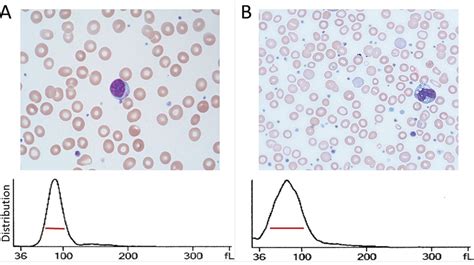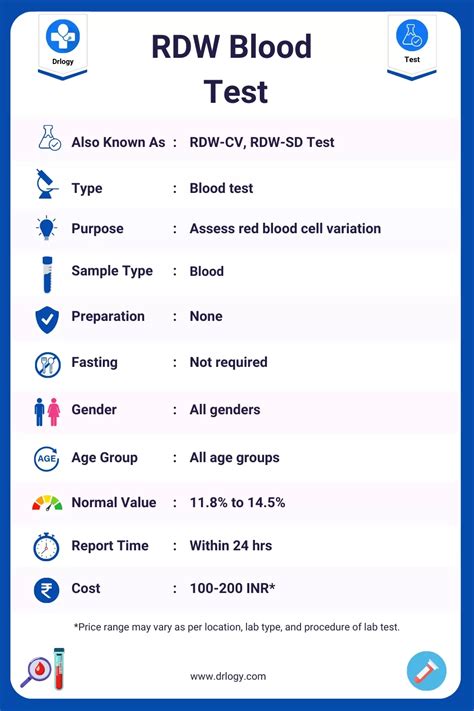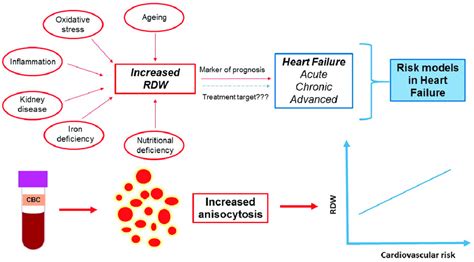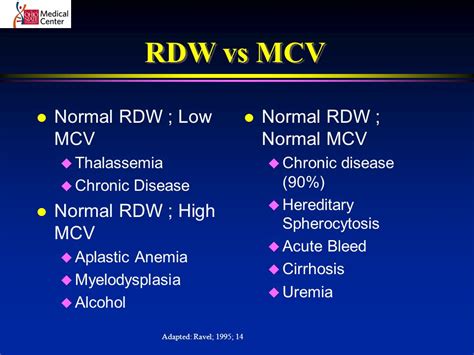Intro
Discover the CBC RDW count explained, understanding red blood cell distribution width, its relation to anisocytosis, and how it affects health, diagnosis, and treatment of blood disorders, including anemia and more.
The complete blood count (CBC) is a fundamental diagnostic tool used in the medical field to evaluate a patient's overall health. Among the various parameters measured in a CBC, the RDW (Red Cell Distribution Width) count is a crucial indicator of the size and variation of red blood cells in the body. Understanding the RDW count is essential for healthcare professionals to diagnose and manage various blood disorders.
A CBC test is a routine blood test that measures different components of the blood, including red blood cells, white blood cells, platelets, and hemoglobin. The RDW count is an integral part of the CBC test and is used to assess the size and uniformity of red blood cells. Red blood cells are responsible for carrying oxygen throughout the body, and any abnormalities in their size or shape can indicate underlying health issues.
The RDW count is calculated by measuring the variation in the size of red blood cells. A normal RDW count indicates that the red blood cells are uniform in size, while an elevated RDW count suggests that the cells are variable in size. This variation can be an indication of various blood disorders, such as anemia, iron deficiency, or vitamin deficiencies. In this article, we will delve into the world of CBC RDW count, exploring its significance, working mechanisms, and practical applications in the medical field.
CBC RDW Count: What is it?

The CBC RDW count is a measure of the variation in the size of red blood cells. It is calculated by measuring the standard deviation of the mean corpuscular volume (MCV) of red blood cells. The MCV is the average size of red blood cells, and the RDW count is used to assess the uniformity of this size. A normal RDW count is typically between 11.5% and 14.5%, while an elevated RDW count can indicate various blood disorders.
How is CBC RDW Count Measured?
The CBC RDW count is measured using a hematology analyzer, which is a specialized machine that analyzes the different components of blood. The analyzer measures the size and shape of red blood cells, as well as their hemoglobin content. The RDW count is then calculated using a complex algorithm that takes into account the standard deviation of the MCV.
Significance of CBC RDW Count

The CBC RDW count is a vital parameter in the diagnosis and management of various blood disorders. An elevated RDW count can indicate iron deficiency anemia, vitamin B12 deficiency, or other underlying health issues. On the other hand, a normal RDW count can rule out these conditions and suggest other possible causes of symptoms.
Benefits of CBC RDW Count
The CBC RDW count has several benefits in the medical field. Some of the advantages include:
- Early detection of blood disorders: The RDW count can detect abnormalities in red blood cells, allowing for early diagnosis and treatment of blood disorders.
- Monitoring of treatment: The RDW count can be used to monitor the effectiveness of treatment for blood disorders, such as anemia.
- Differential diagnosis: The RDW count can help differentiate between different types of anemia, allowing for targeted treatment.
CBC RDW Count: Working Mechanisms

The CBC RDW count works by measuring the variation in the size of red blood cells. This variation is calculated using a complex algorithm that takes into account the standard deviation of the MCV. The resulting value is then compared to a reference range to determine if the RDW count is normal or elevated.
Steps Involved in CBC RDW Count
The steps involved in measuring the CBC RDW count include:
- Blood sample collection: A blood sample is collected from the patient using a sterile needle and syringe.
- Hematology analysis: The blood sample is then analyzed using a hematology analyzer, which measures the different components of blood, including red blood cells, white blood cells, and platelets.
- MCV calculation: The MCV is calculated by measuring the average size of red blood cells.
- RDW calculation: The RDW count is then calculated using a complex algorithm that takes into account the standard deviation of the MCV.
CBC RDW Count: Practical Applications

The CBC RDW count has several practical applications in the medical field. Some of the uses include:
- Diagnosis of anemia: The RDW count can be used to diagnose different types of anemia, including iron deficiency anemia and vitamin B12 deficiency.
- Monitoring of treatment: The RDW count can be used to monitor the effectiveness of treatment for blood disorders, such as anemia.
- Differential diagnosis: The RDW count can help differentiate between different types of anemia, allowing for targeted treatment.
Examples of CBC RDW Count in Practice
Some examples of the CBC RDW count in practice include:
- A patient with iron deficiency anemia may have an elevated RDW count, indicating a variation in the size of red blood cells.
- A patient with vitamin B12 deficiency may have a normal RDW count, but a low MCV, indicating a deficiency in vitamin B12.
- A patient with anemia of chronic disease may have a normal RDW count, but a high MCV, indicating a disorder in the production of red blood cells.
CBC RDW Count: FAQs

The CBC RDW count is a complex topic, and there are several frequently asked questions related to it. Some of the FAQs include:
What is the normal range for CBC RDW count?
+The normal range for CBC RDW count is typically between 11.5% and 14.5%.
What does an elevated RDW count indicate?
+An elevated RDW count can indicate iron deficiency anemia, vitamin B12 deficiency, or other underlying health issues.
How is the CBC RDW count measured?
+The CBC RDW count is measured using a hematology analyzer, which analyzes the different components of blood, including red blood cells, white blood cells, and platelets.
CBC RDW Count: Conclusion and Future Directions

In conclusion, the CBC RDW count is a vital parameter in the diagnosis and management of various blood disorders. Understanding the working mechanisms and practical applications of the RDW count can help healthcare professionals make informed decisions about patient care. As research continues to advance, it is likely that the CBC RDW count will play an increasingly important role in the diagnosis and treatment of blood disorders.
We invite you to share your thoughts and experiences with the CBC RDW count in the comments section below. Have you or a loved one been diagnosed with a blood disorder? How has the CBC RDW count helped in the diagnosis and treatment process? Share your story and help others understand the importance of this vital parameter. Additionally, if you have any questions or topics related to the CBC RDW count that you would like to discuss, please feel free to ask, and we will do our best to provide you with the information you need.
